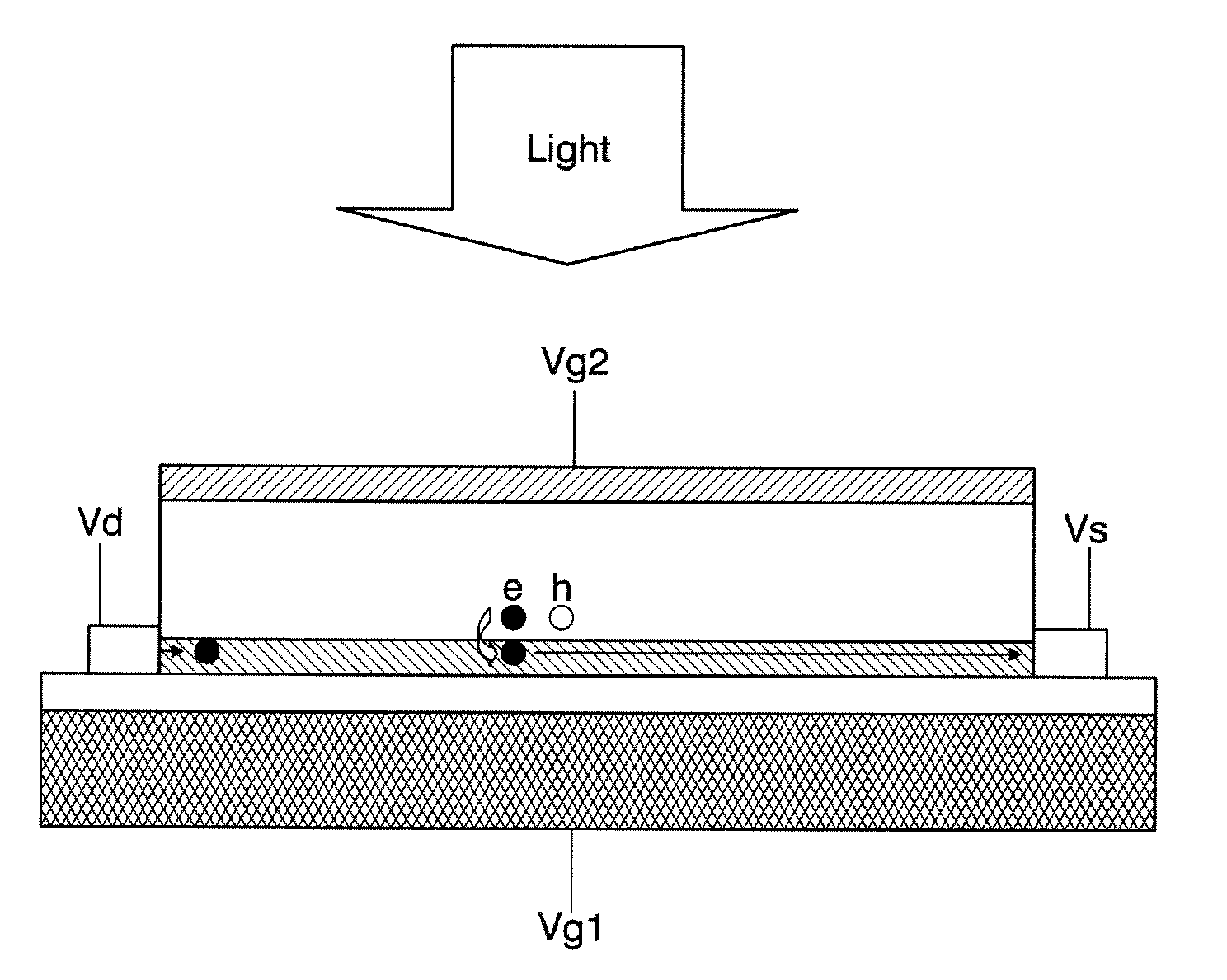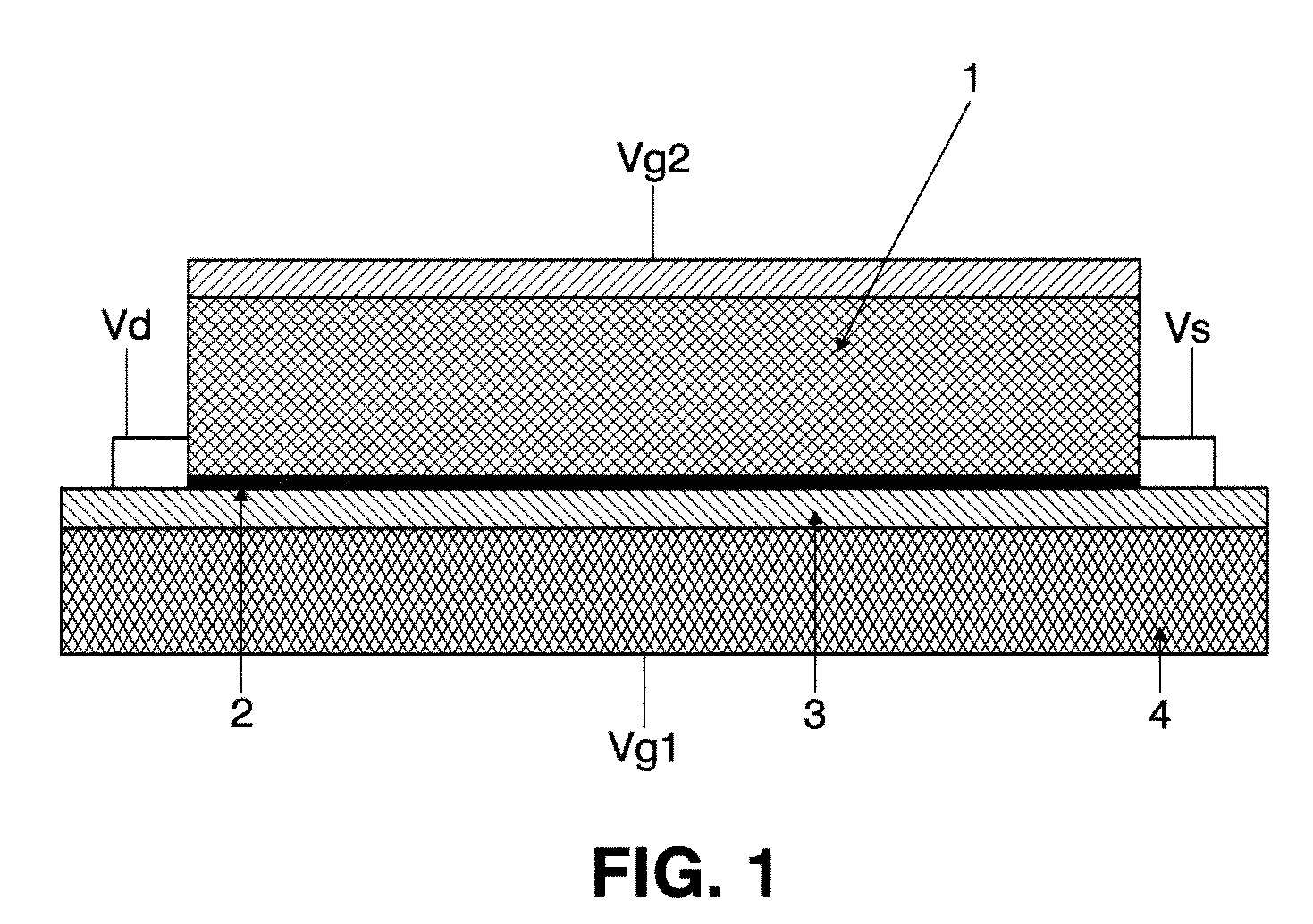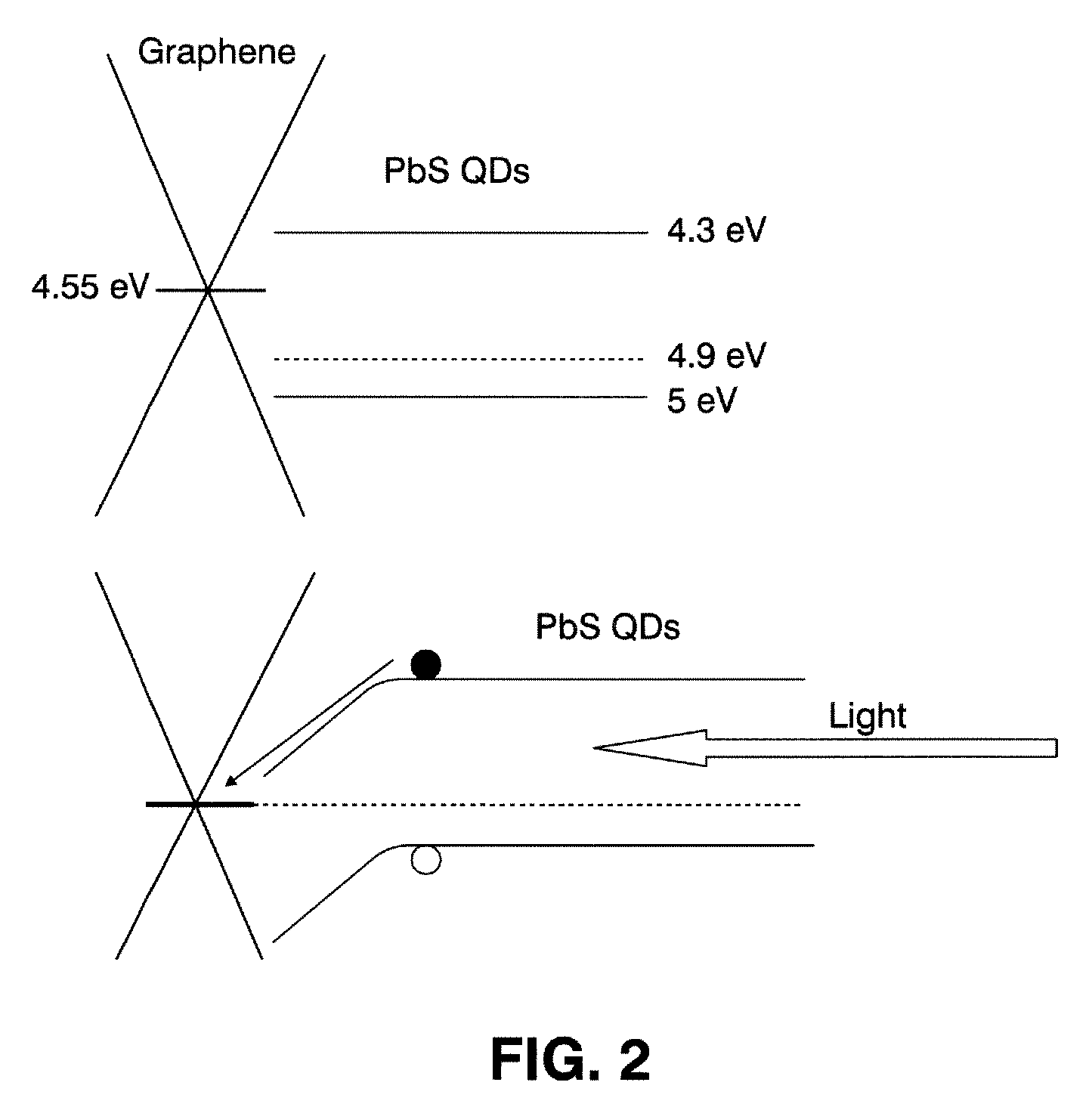Optoelectronic platform with carbon based conductor and quantum dots and transistor comprising such a platform
a technology of optoelectronic platforms and quantum dots, applied in the field of optoelectronic platforms, can solve the problems of low-cost detectors, limited quantum efficiency, and limited read-out nois
- Summary
- Abstract
- Description
- Claims
- Application Information
AI Technical Summary
Benefits of technology
Problems solved by technology
Method used
Image
Examples
Embodiment Construction
[0011]The invention is an hybrid optoelectronic platform compatible with CMOS integration, which consists of a carbon based layer (for example graphene) sensitized with colloidal quantum dots (CQDs). The carbon based layer is used as the carrier transport channel, and CQDs are employed as the absorbing material. As shown in FIG. 1, when applied to a phototransistor, a graphene layer (2) is deposited on a silicon substrate (4) with a SiO2 interlayer (3) to form the gate of the phototransistor, and two electrodes are connected to the graphene in the lateral dimension (Vs, Vd) to form the metal contacts of the device analogously to a source and drain electrodes in a FET transistor. Graphene is then overcoated with a layer of CQDs (1) whose bandgap can be tuned according to the size and material of the QDs (CdSe: 400-650 nm, PbS: 650-2000 nm, HgTe: 1500 nm-4000 nm).
[0012]For the description of the underlying mechanism we focus in the case of PbS QDs, but this can be generally applied to...
PUM
 Login to View More
Login to View More Abstract
Description
Claims
Application Information
 Login to View More
Login to View More - R&D
- Intellectual Property
- Life Sciences
- Materials
- Tech Scout
- Unparalleled Data Quality
- Higher Quality Content
- 60% Fewer Hallucinations
Browse by: Latest US Patents, China's latest patents, Technical Efficacy Thesaurus, Application Domain, Technology Topic, Popular Technical Reports.
© 2025 PatSnap. All rights reserved.Legal|Privacy policy|Modern Slavery Act Transparency Statement|Sitemap|About US| Contact US: help@patsnap.com



